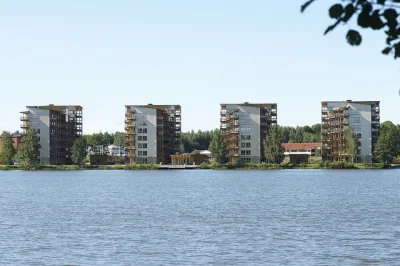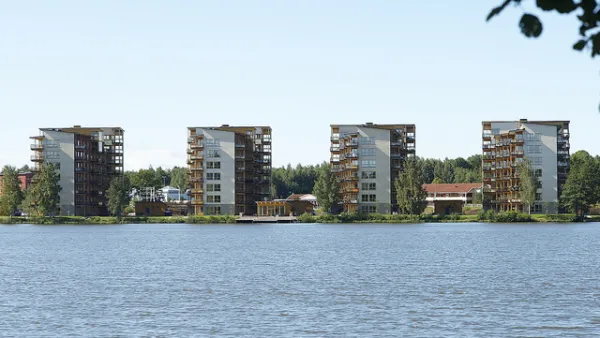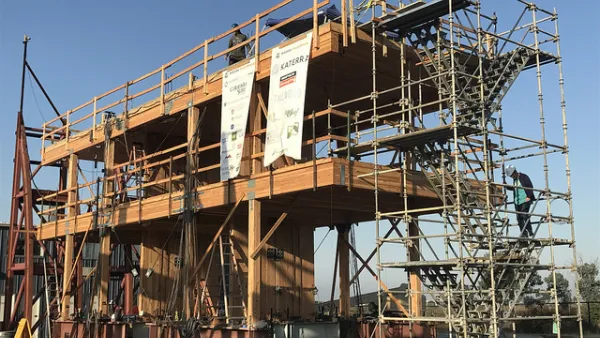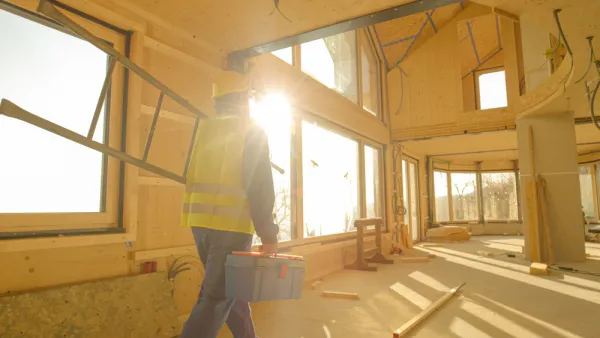Mass timber is a major structural element of an increasing number of skyscrapers, according to a CTBUH survey; now, the fire codes just have to follow.

At The Architect’s Newspaper, Matthew Messing interviews Daniel Safarik, editor of the Council on Tall Buildings and Urban Habitats (CTBUH) about its recently released global audit of “tall timber” buildings.
Tall timber refers to the use of mass timber to construct buildings that are more than seven stories; the audit follows “a spike in announcements of timber tall buildings being proposed and constructed about four years ago [2013].”
Mass timber is an “umbrella term” for several new materials (like cross-laminated timber) that make it possible to use wood to construct skyscrapers.
For reasons ranging from its potential for carbon sequestration to the possibility of local production, timber has been described as “a new frontier in low-carbon building.”
The main obstacle facing the use of tall timber is fire, both in the sense of codes it may not meet and in the sense of fears it may inspire.
The fears, Safarik says, don’t take into account the fact that these materials are produced with fire prevention in mind.
“The key to mass timber’s viability as a structural material for tall buildings lies in its name. Massive wood walls and structural beams and columns comprised of engineered panels have demonstrated fire performance equal to concrete and, in some cases, superior to steel.”
And while the “foremost obstacle” to tall timber construction is local fire codes, Safarik is confident that “[a]s more jurisdictions come to appreciate the aesthetic, economic, and environmental advantages of tall timber, fire codes are expected to change.”
The CTBUH audit lists nearly 50 tall timber designs, ranging in height from seven to 35 stories, and in geography from Lagos to Vienna to Minneapolis.
FULL STORY: Learning from the 2017 global timber tower audit

National Parks Layoffs Will Cause Communities to Lose Billions
Thousands of essential park workers were laid off this week, just before the busy spring break season.

Retro-silient?: America’s First “Eco-burb,” The Woodlands Turns 50
A master-planned community north of Houston offers lessons on green infrastructure and resilient design, but falls short of its founder’s lofty affordability and walkability goals.

Delivering for America Plan Will Downgrade Mail Service in at Least 49.5 Percent of Zip Codes
Republican and Democrat lawmakers criticize the plan for its disproportionate negative impact on rural communities.

Test News Post 1
This is a summary

Test News Headline 46
Test for the image on the front page.

Balancing Bombs and Butterflies: How the National Guard Protects a Rare Species
The National Guard at Fort Indiantown Gap uses GIS technology and land management strategies to balance military training with conservation efforts, ensuring the survival of the rare eastern regal fritillary butterfly.
Urban Design for Planners 1: Software Tools
This six-course series explores essential urban design concepts using open source software and equips planners with the tools they need to participate fully in the urban design process.
Planning for Universal Design
Learn the tools for implementing Universal Design in planning regulations.
EMC Planning Group, Inc.
Planetizen
Planetizen
Mpact (formerly Rail~Volution)
Great Falls Development Authority, Inc.
HUDs Office of Policy Development and Research
NYU Wagner Graduate School of Public Service





























